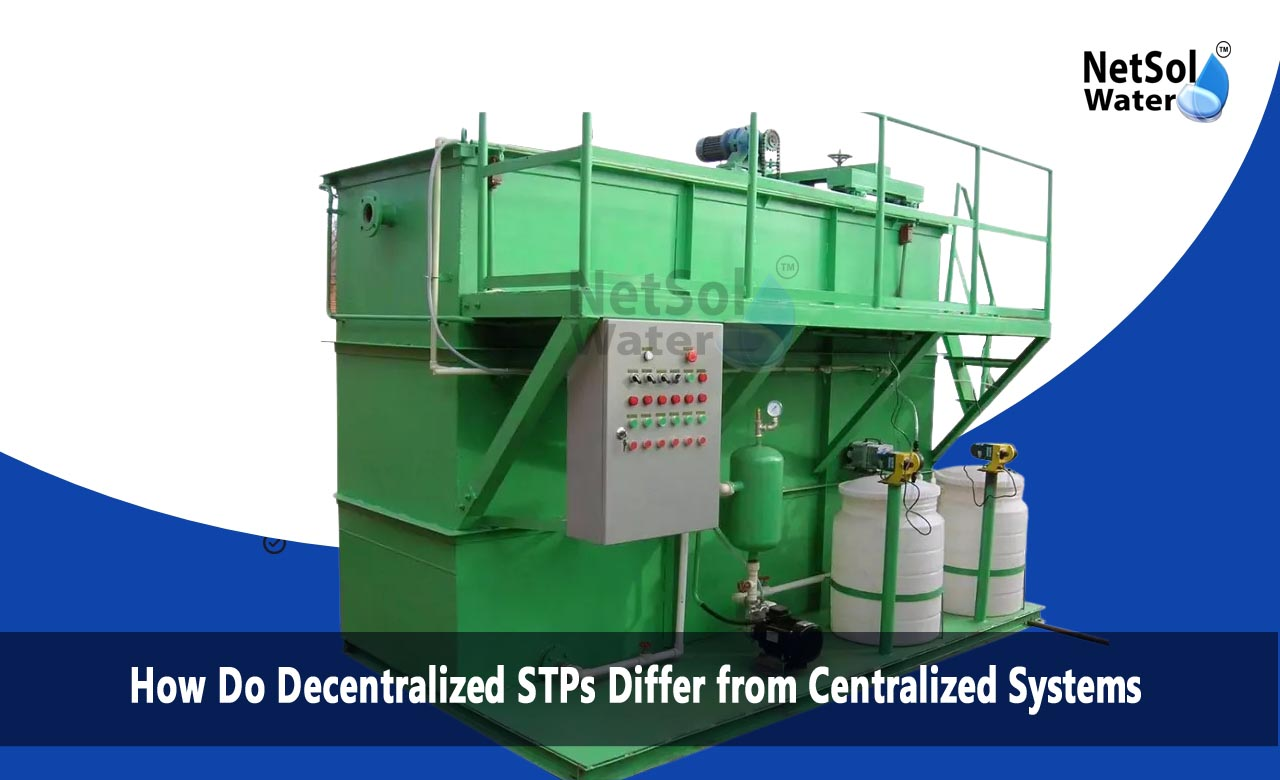How Do Decentralized STPs Differ from Centralized Systems?
Sewage Treatment Plants are key in making wastewater safe, helping keep the environment protected. Because cities are becoming more crowded and industries are growing, proper treatment of sewage is very important. STP networks are generally built in either a centralized way or a decentralized way. Gaining insight into how decentralized STPs differ from centralized systems helps individuals and businesses decide the best way to manage water.
What Is the Difference Between Centralized and Decentralized STPs?
Centralized STPs serve to clean wastewater from large areas, for example, from whole cities or big industrial zones. From various sources, wastewater is sold and sent through wide networks to a single treatment facility.
Alternatively, wastewater is broken down in locally situated STPs. A decentralized plant is a nearby facility that only serves one local area, building or work campus at once. With decentralized systems, sewage is treated in the area where it is produced.
Examining characteristics such as cost, performance, flexibility and their impact on the environment allows us to distinguish how decentralized STPs differ from centralized systems
Why Decentralized STP Services Differ from Those of Centralized Systems?
Capacity and Size
Most of the time, wastewater from a range of sources is handled through centralized systems. They have the capacity to handle thousands of gallons a day. Unlike centralized STPs, decentralized facilities cover less area and treat less wastewater, serving set communities or factories.
Infrastructure Requirements
Since centralized STPs rely on pumping sewage from numerous locations, they have large sewer networks and pumping stations. These pipes can be expensive to construct and maintain.
Decentralized STPs, on the other hand, reduce the requirement of extended sewer pipes. Wastewater is treated near its point of origin, which lowers infrastructure expense and intricacy.
Flexibility and Scalability
Decentralized STPs provide more flexibility. They can be constructed and implemented in phases according to localized requirements. If a population expands, more decentralized units can be installed.
Centralized plants, because of their scale, usually necessitate massive expansion or upgrade if wastewater volumes increase, which can be time-consuming and expensive.
Environmental Impact
Since wastewater in decentralized systems is treated near the point of generation, there are fewer chances of sewage leakage or contamination during haulage. It also makes treated water locally reusable for applications such as irrigation or flushing, which encourages water conservation.
Centralized systems may at times experience difficulties with sewage overflow or clogging in the large network of pipes, causing environmental contamination.
Operation and Maintenance
Centralized STPs typically need to be operated by trained personnel and advanced control systems because of their complexity and size. Their maintenance includes the upkeep of huge equipment and large infrastructure.
Decentralized plants are less complex, more straightforward to run, and frequently less specialized maintenance is needed. They are thus ideal for remote locations or where there are few technical resources.
Costs
Centralized STPs enjoy economies of scale, but their capital costs when starting up are extremely high because they need big infrastructure. The expense of installing extensive sewer pipes can also be prohibitive in certain zones.
Decentralized STPs tend to have lower capital expenditure and less time-consuming installation. They can prove to be more cost-effective for small populations or industries with no connection to a centralized system.
When to Select Decentralized or Centralized STPs?
Both systems possess benefits, and the decision relies on the population density, terrain, infrastructure, and finances available.
Urban Areas with High Population Density: Centralized STPs are usually favored where extensive wastewater collection systems are in place.
Remote or New Developments: Decentralized STPs are a viable solution for areas where constructing large sewer networks is not feasible.
Industrial Clusters: Decentralized plants can be tailored to suit the wastewater characteristics of industries.
Conclusion
It is essential to comprehend how decentralized STPs differ from centralized systems to plan wastewater management effectively. Decentralized STPs ensure flexibility, reduced infrastructure, and localized treatment advantages, whereas centralized systems are best for processing huge quantities in urban settings.
Selecting the proper system guarantees long-term wastewater treatment, ensures public health protection, and preserves water resources. Opting either for decentralized or centralized STPs, the success depends on right design, operation, and maintenance.
Do you need an advice or assistance on selecting the best water and waste water treatment unit? We have solutions for all your problems!
Let us know your problem, our experts will make sure that it goes away.
For an assistance or related query,
Call on +91-9650608473 Or write us at enquiry@netsolwater.com



